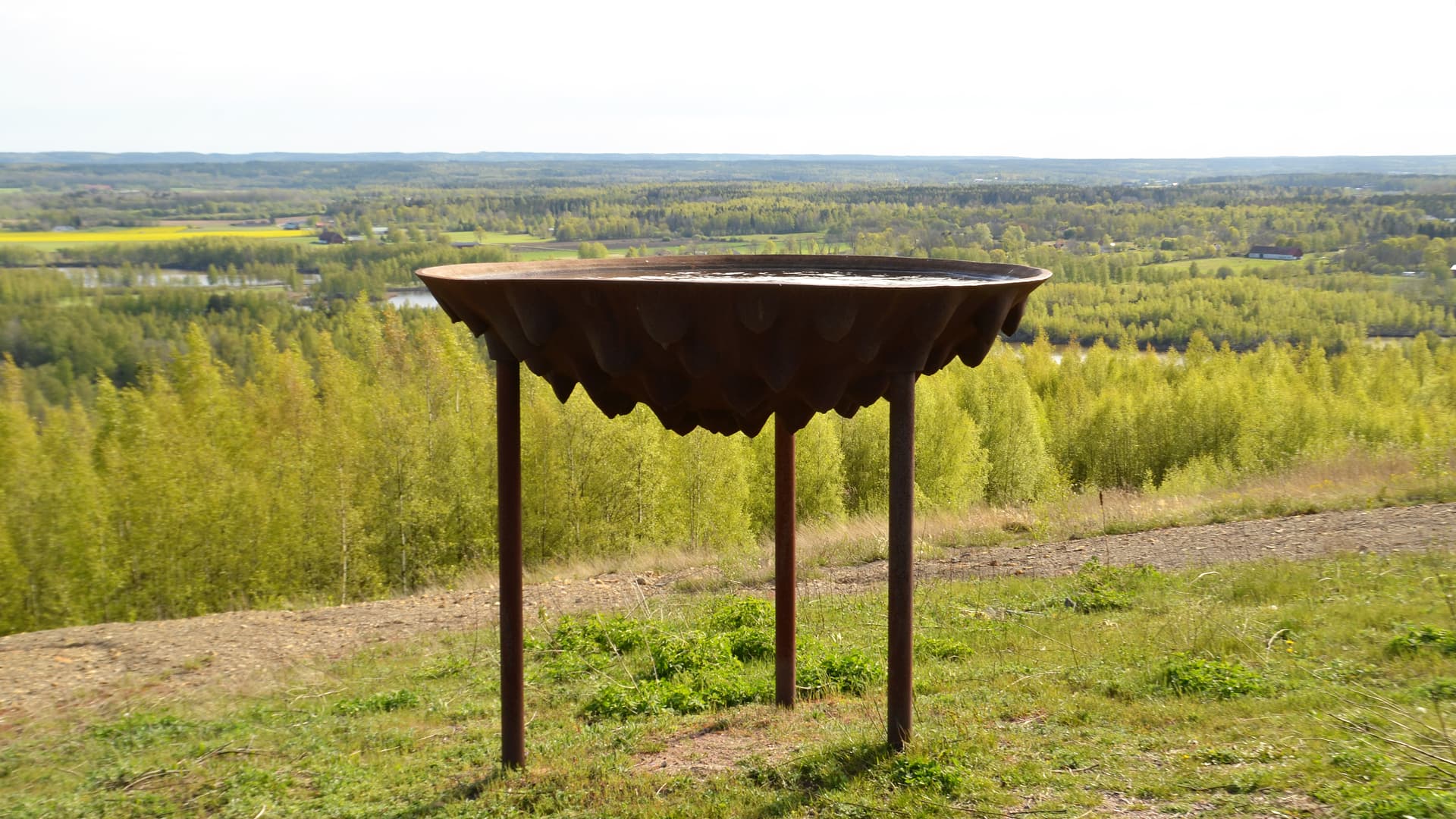11. Bröstskål
ARTIST: Ulf Rollof (2000)
TECHNIQUE: Cast Iron

Nature for Ulf Rollof is a living creature that both gives and takes life. Life is characterized by the struggle for survival and respect for nature´s good and evil powers. Breast Bowl alludes to the legend of Romulus and Remus, high-born twins, who were placed in a trough on the Tiber to perish. However, they were saved by a she-wolf who nursed both children, although they were the offspring of her worst enemy. The breast that gives suckle can be seen as a symbol of what is instinct in nature, what is natural, original and safe, and it is a question of survival as well. The underside of the sculpture is shaped like hanging breasts or udders. Breast Bowl is either a trap or a catcher of life-giving water.
Rain and snow must come from the sky to give the soil vitality and to make life grow. Ulf Rollof´s work that fires the imagination is a striking center for a fertility cult. All around the world there are examples of fertility cults where the god was equipped with many breasts to give suckle to the many. One known example is the Many-breasted Diana or Artemis from Ephesus. Artemis with her grape-looking breasts symbolizes Mother Earth herself as life-giver. Rollof´s work, his beautifully shaped cast iron bowl can be seen as an abstract form of Artemis for both drinking and giving. His work is like a she-wolf or a sow that is nursing; it drips from the many breasts on the underside of the bowl when the bowl is filled with rain water and runs over. In this way even Rollof´s work is a symbol of the gathering of vitality and giving it to those in need of solace.
Ulf Rollof was born in Karlskrona in 1961. He is a Swedish painter, sculptor, installation artist and draughtsman. He was trained at the Royal College of Fine Arts in Stockholm and has had separate exhibits at the biennial in Venice, at the Milles Museum in Lidingö and at Museo de la Ciudad i Queretaro in Mexico. He is also represented at the Gothenburg Art Museum and the Nordic Water-color Museum.
Rollof is considered to be one of the best known international artists in Sweden. His art often connects with history and the idiom from the place or the culture where it was created. He investigates the principles of how form is created locally out of function, use or tradition. Even if Rollof´s work may appear to be practically functional, it must not necessarily be so.
Rollof´s work often deals with machines or technical constructions that preferably have something to do with purification, rescue or demolition functions. His recurring themes are the decay of civilization, culture clashes and works that are helpers when facing apocalyptic scenarios. This is of current interest today with threats to the climate and man´s life style that is severely taxing the limited resources on earth.
As mentioned before, Rollof thought of the myth of Romulus and Remus. The great cast iron bowl is placed high up on the slope, like a mother who is pregnant with the nutrient fluid of life that she gives away when she has enough of it. Before she had to economize with what she had in order for life to continue. The sculpture is like a cycle of supply, emptying and replenishing. This is the rhythm of life´s ancient law on our earth.
Sidinformation
- Senast uppdaterad:
- 20 september 2023
- Sidan publicerad av:
- Piia Edh
